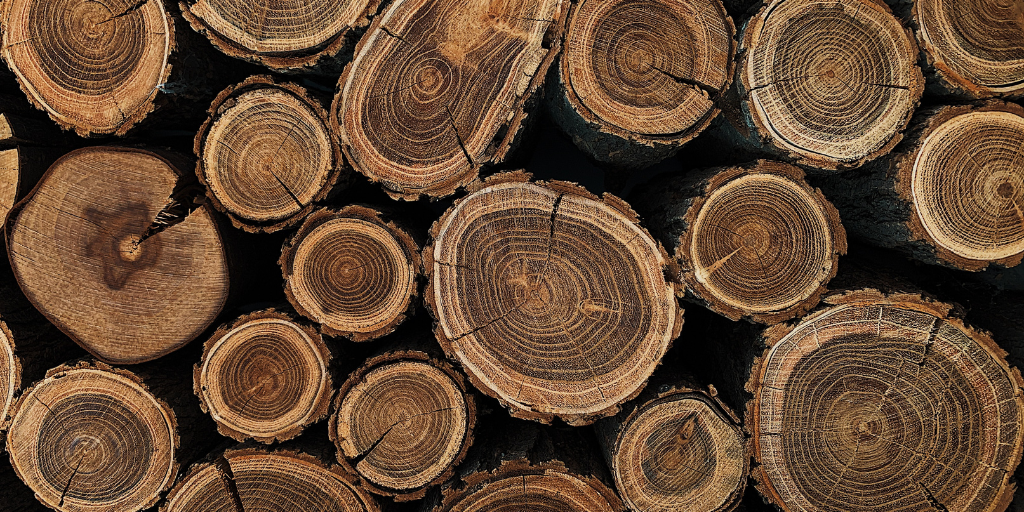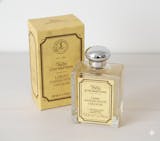Types Of Straight Razors: Different Points

A wise man would know that his success story in investing in straight razors depends on the quality of the types of straight razors he would get.
Straight razors have different blade points, and choosing the best one that will suit your needs and expertise can help you achieve a great shave.
And when looking for the ideal straight razor for you, it would be best to consider the different types of straight razor blades.
Hence, in this article, we will discuss the following types of straight razors:
- Your Shaving Journey
- Different Parts of a Straight Razor
- Types of Straight Razor’s Point
- Square Point
- Dutch Point
- Spike Point
- French Point
- Spanish Point
- Barber’s Point
- How to Choose the Best Point for Your Straight Razor
- Straight Razor Types By Grinds
- Straight Razor Blade Sizes
- Scale and Handle Materials
- What to Look for in a Straight Razor
Your Shaving Journey
 As you progress through your journey, your shaving gear of choice becomes more premium.
As you progress through your journey, your shaving gear of choice becomes more premium.
For most male shavers, switching to a straight razor is similar to joining the big leagues, and it is the next level in their journey through male vanity.
-
Beginner: Cartridge Razors
Disposable razors or cartridge razors are a shaving tool that is easily accessible, convenient to use, and easy to bring while traveling. It has a multi-blade feature that gives men the promise of having a close shave,1 sadly for the price of more post-shave skin irritations and spending so much on frequent shopping trips to change blades.
-
Intermediate: Shavettes & Safety Razors
The usual options would be a shavette and a safety razor with a double edge blade for a better and smoother shave.2 Both have disposable blades and are popular wet shaving tools perfectly partnered with shaving cream or with a warm lather whipped from a shaving soap using a shaving brush.
You will get fewer nicks and cuts—and only because you still had to overcome a learning curve—but you always get a smooth and clean shave. Plus, you do not need to hone them or use a leather strop. These have been staples in barber shops alongside the best straight razors. But then again, like a seven-year itch, you feel the need for something new, like wanting to turn pro.
-
Expert: Straight Razor
The ultimate and barber-like wet shaving experience, the straight razor undoubtedly meets the user’s expectations and more. The single edge of a straight razor’s blade lets you bevel perfectly in the direction of your shave, accounting for more precision.3
It is also a lifetime investment that could be a tremendous generational heirloom by occasionally stropping before every use and honing.
Every time you level up your type of razor, the better shaving experience you will enjoy. If you are just starting your journey with straight razors, please see this Straight Razor Guide to help you learn the basics of a straight razor shave.
Different Parts of a Straight Razor
 The different parts of a straight razor holistically performs together to fulfill a functional mechanism.
The different parts of a straight razor holistically performs together to fulfill a functional mechanism.
Unlike a safety razor that only has three main parts, a straight razor has many components. Many straight razor purists love to point out which of these are the essentials for making a perfect straight razor.
The illustration above depicts the basic straight razor parts. All of these have distinct functions accounting for a smooth shave. Here’s what they do:-
Pivot pin - connecting peg between the scales and the razor blade
- Scales - official term for a straight razor handle
- Tang - other end of the blade for balancing or stabilizing the finger
- Shank - binding metal section between the blade and the pivot pin
- Jimps - ridges or “fluting” under the shank assisting better grip on the underside of the shank
- Shoulder - end of a straight razor blade or the section between the shank and spine
- Spine - top side of the razor blade
- Point - straight razor blade’s profile or flat end
- Face - blade’s side surface that can be customized with logos, initials, and other decorations
- Toe - endpoint of the blade’s cutting edge
- Edge - straight razor blade’s cutting edge or sharp cutthroat surface
- Heel - area under the shoulder, connecting the heel and shank, aiming to protect the thumb
- Stabilizer - embossed area between the shoulder and heel
Some of the most common parts of a straight razor that buyers scrutinize when buying their first straight edge razor are the blade and handle material. The other factors, like the blade’s hardness or Rockwell rating (HRC) and geometry, are also huge defining factors of the quality of a traditional straight razor.
Types of Straight Razors’ Point
 The blade's points define the precision of one's shaving experience.
The blade's points define the precision of one's shaving experience.
The geometry of a razor blade is measured along with these factors: the shape of the blade’s point, the type of grind used for the blade, which makes it hollow or flat, and its size.
Among these three, what gets a lot of mileage in discussion forums is whether the blade has a full hollow grind (meaning the sides are concave) or a flat grind (the sides are straight). But then that is because the two other factors tend to be dismissed as aesthetic modifications.
Granted, the different types of points4 give their respective blades a distinctive style and efficiency in shaving, more so when you consider their names.
The six types of straight razor blade points are:
- Square Point - straight edge profile
- Dutch Point - round points
- Spike Point - edge is slightly longer than the spine
- French Point - slightly curved edge profile
- Spanish Point - small rounded spine tip and concave edge profile
- Barber’s Point - similar to a Spanish point but with a deeper curve.
Square Point
Skill level: Expert
This is maybe one instance when it is not hip to be square.
The square point is not the most forgiving out of the different blade types or points for rookies. It is called a square point because it resembles the straight side of a square. Thus it has a very sharp point perpendicular to the razor's sharp edge. It requires relative skill in handling this blade.
Despite its being a literal cutthroat razor point, it is the type of blade point that most vintage straight razors wear due to the popular manufacturing methods of the olden days. If you have got heirloom razors on your shelf, we recommend keeping them stored until you have the skill and the nerve to wield them.
Handling this kind of straight razor requires relative skill. Otherwise, you will frequently suffer from nicks or accidental cuts.
Dutch Point
Skill level: Beginner to Expert
Dutch point straight razors do not offer as much accuracy as a square point due to their semi-circular profile lacking any straight edges, hence being an anti-square point.
A single edge razor with this type of point is not suitable for trimming a goatee since the blade’s point does not get closer to the skin than the other types.
On the other hand, the rounded edge of these types of straight razors5 is excellent for easing oneself into a straight razor shaving experience. The shape protects you from any nicks and cuts, making it an ideal blade point for beginners.
Spike Point
Skill level: Expert
A spike point wears a similar feature to the square point, except that the angle of the blade point is less than 90 degrees, which makes the blade look like its point is slanted backward.
It is as dangerous as its name. The spiked shape is the most vicious of all blade points because the acute angle calls for more risks of cuts and nicks if not handled with care.
But even something as cutthroat as this point is helpful for something.
Spiked blade points are best for shaving areas under the nose or earlobe since the smaller point can maneuver anywhere.6 You have to be skilled and precise. Otherwise, you will be missing an earlobe, or worse, a nostril!
French Point
Skill level: Intermediate to Expert
Ah, the French! The culture’s distinctive sense of style is probably why this type of point was dubbed as the straight razor French point.
A straight razor blade with a French point wears an edge profile that is a fusion between the Dutch and Spike points. It has the sharp edge of a Spike to give some precision, but the roundness protects the skin from being nicked.
The French point straight razor is the most popular among shaving aficionados.7 Its smaller diameter tip makes it easier to trim facial hair while keeping accidental nicks to the minimum.
Spanish Point
Skill level: Intermediate to Expert
The Spanish point straight razor has a uniquely shaped blade point with a small round tip at the edge of the spine that later curves into a concave end. It is not as wicked-looking as a Spike point,8 but it is all in the execution.
A straight razor with a Spanish point can bite off your strop if you are not careful. The pronounced edge can be sharp enough to just about pounce on anything, which also applies to one’s own mug.
The Spanish point provides a certain degree of precision since it allows the user to see the spots they are shaving, while its inward curve protects the skin from unnecessary nicks.
Barber’s Point
Skill level: Intermediate to Expert
The Barber’s point is popular among barbers because of the versatility of its design, which is similar to the Spanish point but with a deeper and more pronounced arc.
Traditional straight razor experts say that there had been some initial confusion about the purpose of its notch point.7 People thought it was used to shave the philtrum—that indentation between your nose and upper lip.9
Yet, the actual function of the blade’s point is to allow the barber to open the razor easily. The mechanism is extra convenient, especially when barbers are busy flicking open razors during their day.
How to Choose the Best Point for Your Straight Razor
The best type of straight razor will always be according to user preferences, like your beard type, skin type, and wet shaving expertise.
-
For Experts
The best straight razor point for experts would be the Spike and Spanish points. The shape of the edge’s tip will surely level up anyone’s wet shaving skills.
-
For Beginners
The Dutch point razor's semi-circular edge is safer to use and master for those who just started using a straight razor. It accounts for less room for mistakes because the curve protects your skin.
Get the French or Barber points if you are keener on choosing your straight razor type by its aesthetic appeal. But overall, for practicality, razors with a Dutch round point is the best straight razor for beginners as it is more forgiving to sudden changes in angle or direction, so you get fewer nicks and cuts.
Leave the intricate carving and trimming to the professional barbers. At this stage of your manhood, you need to experience the meditative benefits of wet shaving. Using a Dutch point blade will easily guarantee a smooth and clean shave without bumps or cuts.
Straight Razor Types By Grinds
 The thinness and thickness of a straight razor blade is defined by its grind.
The thinness and thickness of a straight razor blade is defined by its grind.
The point is complemented by the straight razor’s grind or the shape and thickness of the blade’s cross-section, which can sometimes appear entirely flat or concave. It also ensures that the straight razor blades are sharp, effective, and suitable for shaving.
A blade with a flat shape is a wedge, while a blade with a concave shape is a hollow grind.
The grind allows wet shavers to feel how the blade glides on the skin and cuts through the hair. It also lets them feel any resistance, which indicates that the edges need stropping or honing.
The shape and thickness of a straight razor’s blade are determined through the grinding process, which begins with a blank or flat metal plate.10
As the process progresses, these are formed into a basic straight razor blade shape and are continuously passed through a grinding machine to remove more steel or thin out the edges.
The different types of straight razors’ blade grinds are:
Hollow Grinds
The most common type of straight razor grind is called a hollow, which has a thinner and lighter edge with a concave profile. Its grinding process removes more metal from the blade’s face, resulting in its distinct build.
Although straight razors with a hollow grind offer more ease to the skin, it is also delicate. Honing and stropping hollow grind straight razors need more precision and care to avoid going overboard and breaking the blade.
That is when the stabilizer comes into work. This part of the blade, often called a belly or ridge, provides support and more resistance. As a result, the blade is less prone to breaking despite its thin edge.
A hollow ground straight razor11 can either be:
- Quarter Hollow - also known as a partial wedge or the thickest among the hollow grinds wherein only a quarter of the blade is ground into a concave; it is also popular for 19th to 20th century vintage razors.
- Half Hollow - is the balance between a wedge and extra hollow with the middle of the blade ground into a concave, a popular grind for Dovo, Boker and Thiers Issard.
- Full Hollow - the most popular straight razor blade grind featuring the thinnest edge, most flexibility, and sharpness.
- Extra Hollow - also known as singing hollow blades or an upgraded version of the full hollow with next-level thinness, flexibility, and sharpness due to the deeper grind; best for experts.
Wedges
Straight razors with a flat face fall under the wedge grind. Many vintage straight razors wear this thickness and shape, making it the classic and traditional grind of a blade.
Wedge grind straight razors are more suitable for expert wet shavers. The blades are thick, full, and heavy, making them harder to master, and it also does not let you have the same sensitivities a hollow grind blade would offer. However, a wedge grind can easily cut through coarse and thick hair.
In terms of blade maintenance, straight razors with a wedge grind are not forgiving for beginners. Its thickness makes it more challenging to strop and hone properly, hence not being advisable for daily use.
Framebacks
A frameback is a straight razor with a blade that is not manufactured together with the frame.12 It is a popular blade design in France that has a separate flat grind blade pressed on the frame, resulting from a more convenient production process.
When choosing the perfect straight razor grind, the general rule to ponder is that the thinner the grind, the sharper and more precise the edge will be, but it is more challenging to strop or hone. On the other hand, thicker grinds are easier to control but offer less precision.
Straight Razor Blade Sizes
 Naked Armor's Solomon Straight Razor wears an ideal blade size for a more effective shaving experience.
Naked Armor's Solomon Straight Razor wears an ideal blade size for a more effective shaving experience.
Aside from points and grinds, a straight razor is also measured by its blade width or size. The straight razor’s blade size is the width or distance between spine and edge is measured in 8ths of an inch, (5/8", 6/8”, 7/8", and 1”).13
Among these measurements, the most common straight razor blade sizes range between 5/8" and 6/8”. The small width of the blade allows the users to easily observe the edge as it glides over the skin while shaving. Meanwhile, anything above 7/8" can be too challenging to use, especially for beginners.
Scale and Handle Materials
 Wood is an ideal straight razor scale material because it effortlessly offsets the blade's weight.
Wood is an ideal straight razor scale material because it effortlessly offsets the blade's weight.
A straight razor handle can be from different materials, like wood, plastic, and resin. However, classic and traditional straight razors use premium wood as it provides more weight that helps offset the blade’s heft for a more effortless shaving experience.
In the past, the most common materials manufacturers used to make scales were horn and ivory. They exude premium luxury and ideal heft as well. However, ivory and horn are rare today and can be unsustainably sourced.
Some straight razors also have steel handles, although not as common. The pivot pin works best when there is a well-balanced weight difference between the blade and the handle, which defines the tension.
Generally, scales can either be any of the below:
- Wood
- Horn
- Plastic
- Resin
- Steel
- Ivory
Although wood is the ideal material for a straight razor handle, it can be problematic when it comes into contact with water. Thus, it is necessary to find a single edge razor that uses hardwood and practice proper straight razor maintenance to prevent the handles from deteriorating quickly.
Nevertheless, the real defining factor of a straight razor’s scales is its ability to fulfill its function, which is to offset the weight of the blade. Hence, the best straight razors have an excellent blade-to-handle ratio that balances the pivot pin.
What to Look for in a Straight Razor?
 Bearing premium Japanese stainless steel and Ebony wood handle, the King Arthur Straight Razor exudes the perfect features of a high-quality straight razor.
Bearing premium Japanese stainless steel and Ebony wood handle, the King Arthur Straight Razor exudes the perfect features of a high-quality straight razor.
The best types of straight razors have the perfect balance between the blade and scale material and blade size, point, and grind. Most importantly, the blade should be made of high-quality steel, which can be stainless steel, carbon steel,14 or even Damascus steel, as long as the HRC or hardness rating is between 61-63 HRC.
Wet shaving beginners would shave more efficiently with a 6/8” straight razor blade with a Dutch point and a half to full hollow grind. Then slowly transition to thicker blades with other blade point types as they master their shaving technique and get to know their beard and skin type.
Here at Naked Armor, our best-selling Solomon and King Arthur Gold Straight Razors are exquisitely designed artisanal razors. The Solomon has a Japanese steel blade and a valuable algum wood handle. Meanwhile, the King Arthur Gold has a Japanese stainless steel blade and an Ebony wood handle.
These are the perfect shave ready shaving razors to start one’s day because their sharp edge and rounded Dutch pointed blades guarantee smoothly cutting stubbles without getting unnecessary nicks from the straight edge.
It is a luxurious shaving experience that will guarantee you get an enjoyable and efficient shave every time. If not, we will get your razor professionally honed through our Straight Razor Master Hone Services.
Check out our line-up. Better yet, Click Add to the Cart below and order now.
More Naked Armor Reads:
Straight Razor Basics: How the Modern Straight Razor is Produced
Benefits of Using a Straight Razor
Is a Straight Razor the Best Shave
References:
1. Safety Razor vs. Cartridge Razor. Bib & Tucker. https://www.bibandtucker.com/blogs/news/safety-razor-vs-cartridge-razor#:~:text=The%20cartridges%20range%20anywhere%20from,going%20over%20the%20skin%20repeatedly. Published 2022.
2. Sharpologist.com. https://sharpologist.com/shavette-vs-safety-razor/#:~:text=Learning%20Curve,shorter%20with%20a%20safety%20razor. Published 2022.
3. The Benefits of a Single Blade. Barbarossa Brothers. https://barbarossabrothers.com/blogs/the-journal/why-shave-with-a-single-blade#:~:text=With%20the%20right%20technique%2C%20single,of%20ingrown%20hairs%20and%20irritation. Published 2022.
4. Different Types of Straight Razors: Grinds, Points, Notches & Designs. Bespoke Unit. https://bespokeunit.com/shaving/straight-razor/designs/#points. Published 2022.
5. CHOOSING A STRAIGHT RAZOR. Beard & Blade. https://www.beardandblade.com.au/blogs/academy/choosing-a-straight-razor. Published 2022.
6. Razors S, Talk G. Why a spike point?. Badger & Blade. https://www.badgerandblade.com/forum/threads/why-a-spike-point.20583/. Published 2022.
7. A Guide To Conventional Straight Razors. Sharpologist.com. https://sharpologist.com/2016/01/guide-conventional-straight-razors.html. Published 2022.
8. spanish point?. Badger & Blade. https://www.badgerandblade.com/forum/threads/spanish-point.41428/. Published 2022.
9. Lip-Philtrum Guides. Depts.washington.edu. https://depts.washington.edu/fasdpn/htmls/lip-philtrum-guides.htm. Published 2022.
10. What Is A Razor Grind? | Straight Razor Grinds Guide. Theenglishshavingcompany.com. https://www.theenglishshavingcompany.com/en_gb/blog/what-is-hollow-razor-grind/#:~:text=The%20grinding%20process%20refines%20the,different%20shaving%20results%20and%20experiences. Published 2022.
11. Straight Razor Series - Comparing Grinds |. Blog.fendrihan.com. https://blog.fendrihan.com/2019/05/straight-razor-series-comparing-grinds/. Published 2022.
12. Frameback straight razors. TheShaveDen. https://theshaveden.com/forums/threads/frameback-straight-razors.34655/. Published 2022.
13. CHOOSING A STRAIGHT RAZOR. Beard & Blade. https://www.beardandblade.com.au/blogs/academy/choosing-a-straight-razor. Published 2022.
14. Best Metal for a Straight Razor (Stainless Vs Carbon Vs Others) - imustacheyoutoshave.com. I Mustache You To Shave. https://imustacheyoutoshave.com/best-metal-for-a-straight-razor-stainless-carbon/. Published 2022.




























So I purchased one of your razors, and I do love it I will never ever go back to the plastic handles, or he cartridges, they just feel so cheap by comparison. I personally recommend Naked Armor products to many shoppers that come through my walmart check lane because of the superior quality and great customer service. All this being said I wish I had access to this article before I purchased a razor just so that I could have made an informed choice on a beginner razor because I chose one with a tip more intended for an expert shaver.
Leave a comment